With the RAAF’s first two operational F-35 fighters arriving in early December, long-time critics have launched a fresh wave of claims that the aircraft is a disaster.
Early in September, a writer in a major Australian newspaper declared that U.S. pilots had ‘finally forced into the open one of the greatest cover ups in the modern world: the disaster that is the Joint Strike Fighter (JSF) or F-35’. This claim is maybe one of the most ironic of all myths about the JSF, given it’s one of the most openly reported and heavily scrutinised development projects in world history.
The report went on to say, ‘America’s pilots could see that the JSF was no match for equivalent Russian and Chinese aircraft. Add to that bad management in the U.S. air force and the U.S. pilots have been leaving the USAF force [sic] in droves. Who wants to fly a death machine into battle?’
The big problem with the resurrection of myths about JSF capability trouble is that they are wrong. Another problem with the regurgitation of earlier claims is that many issues aired earlier have been resolved over the course of the JSF’s development. So we are hearing old news dressed up as new insights.
It’s worth saying something simple up front: the jets are operational with U.S. and Israeli forces. The Israelis have used them operationally this year.
And the jets have proved very effective in the U.S. Red Flag exercise—the most rigorous air combat contest held in peacetime—which pits forces from the U.S. and allies such as Australia against teams trained to perform as the ‘enemy’ and equipped as much as possible to fight using the tactics of a potential adversary. F-35s achieved kill ratios of over 20 to 1. That’s an impressive empirical proof of capability and performance.
The U.S. company that builds the JSF, Lockheed Martin Corporation, flew Australian journalists, myself included, to its plants in Fort Worth, Texas, and Orlando, Florida, to examine the project. The information I gathered through that trip, including from U.S. Air Force personnel, is helpful in understanding the actual status of the jets and the production program.
So, on to some of the claims.
Are JSF pilots voting with their feet?
No. U.S. Air Force pilots across all aircraft types are being recruited by airlines that can pay more than the U.S. government, but JSF pilots aren’t unique in this situation. The pattern of competitive recruitment from airlines recurs as economic conditions change.
JSF pilots I have spoken to say the stealthy, multi-purpose fifth-generation jet is easy to fly, revolutionary in its capabilities, and very popular with those operating it.
On the claim that Russian and Chinese aircraft are superior, Lockheed Martin employees said that on the scant information available about aircraft such as the PLA’s Chengdu J-20 fighter and Russia’s Su-57, it appeared that both lagged the F-35 by 10 to 15 years in terms of stealth and other key capabilities. The Russians seem to have switched effort across to the Su-35, maybe showing the developmental and funding difficulty they were having with the Su-57.
The head of ASPI’s defence and strategy program, Michael Shoebridge, says various analysts tend to toss up comparisons between the JSF and the Russian and Chinese aircraft and usually combine this with a list of JSF developmental problems over time.
Shoebridge says that what these critics miss in their analysis is the exhaustive scrutiny of such U.S. projects through the transparency built into them. The U.S. government, through Congress, the U.S. Department of Defense and the U.S. Government Accountability Office, has provided reams of warts-and-all disclosure on the development of the JSF. In contrast, there’s almost no disclosure of the developmental difficulties in the Russian and Chinese programs.
This leads to analysis focusing on the JSF’s problems, while these other nations’ capability programs are almost assumed to have no issues. That is likely to lead to two consequences:
- underestimation of JSF capability (particularly when it operates as part of an integrated force of systems, sensors and shooters—as it is designed to do)
- overestimation of the Chinese and Russian capabilities—a bad case of Donald Rumsfeld’s famous ‘unknown unknowns’—with nothing but upside attributed to others’ efforts, despite the inherent difficulty of their programs.
Shoebridge agrees that the JSF program has indeed experienced problems and delays. Even a critical eye, though, has to recognise there is a track record of resolving complex issues through that development.
A June 2018 Government Accountability Office report notes the extensive work required across the life of the JSF to adapt the capability through continuous development. Shoebridge says that’s a sensible assessment for a system that will remain in service for decades.
‘To me’, he says, ‘the bigger message is the fact that the GAO report focuses mainly on controlling the acquisition cost and cost of ownership and improving overall system reliability. That’s a symptom of technical success.’
One oft-repeated claim is that the JSF is massively more expensive than its fourth-generation predecessors. In fact, as the jet shifts from development into production the cost is sliding down.
While the first models off the production line cost well over U.S.$100 million each, the current tranche of F-35A models—the version Australia will buy at least 72 of—cost U.S.$94.3 million each.
Lockheed Martin executives insist that by the time the RAAF pays for the bulk of its jets, the ‘fly-away’ cost will be below U.S.$80million per plane. By comparison, the latest Super Hornet advanced fourth-generation jets cost U.S.$78 million each.
The company says it’s working to drive F-35 maintenance costs down to around the equivalent of maintaining fourth-generation fighters.
A gap in the F-35’s capability is the need for a more effective maritime strike capability. Australia is working with Norway to build such a weapon to be added to the JSF arsenal.
An old claim re-emerged this week that the JSF could be taken down by a lightning strike. Lockheed Martin said that issue had been resolved and the aircraft could survive a direct strike by lightning. And while it’s never entirely safe to fly any aircraft into lightning conditions, there are no specific or unique restrictions on the JSF flying in such conditions.
Let me give one example of the inordinate level of scrutiny the JSF is exposed to and take the time to rebut it in equally inordinate detail.
A safety issue which emerged over a year ago was concern that the weight of the helmet could result in the shock from a parachute opening breaking the neck of a very light pilot ejecting from the aircraft.
The helmet is heavy because it’s a key part of the aircraft’s capability. It’s linked to six cameras placed around the fuselage to give the pilot an extraordinary level of all-round vision. The pilot can look ‘through’ the fuselage or down through the floor and see the landscape below.
For a time, pilots weighing less than about 62 kilograms were barred from flying the aircraft.
The risk to the pilot was reduced by installing a switch in the ejector seat, which slightly slows the parachute’s deployment at high speeds and reduces the opening shock.
In addition, a support panel has been added to the parachute’s rear risers to stop the pilot’s head being flung backwards during ejection. The helmet’s weight has also been reduced.
The pilot weight restriction has now been lifted.
It’s also been claimed often that the F-35 has proved inferior to older aircraft in dogfights. U.S. and Australian pilots have pointed out that the F-35 is designed to identify its enemies and destroy them long before the opposing pilots even know it’s there. That is an operational advantage of far more importance to survivability and combat success than dogfight performance.
Back to the Red Flag results, if facts can help slay myths …


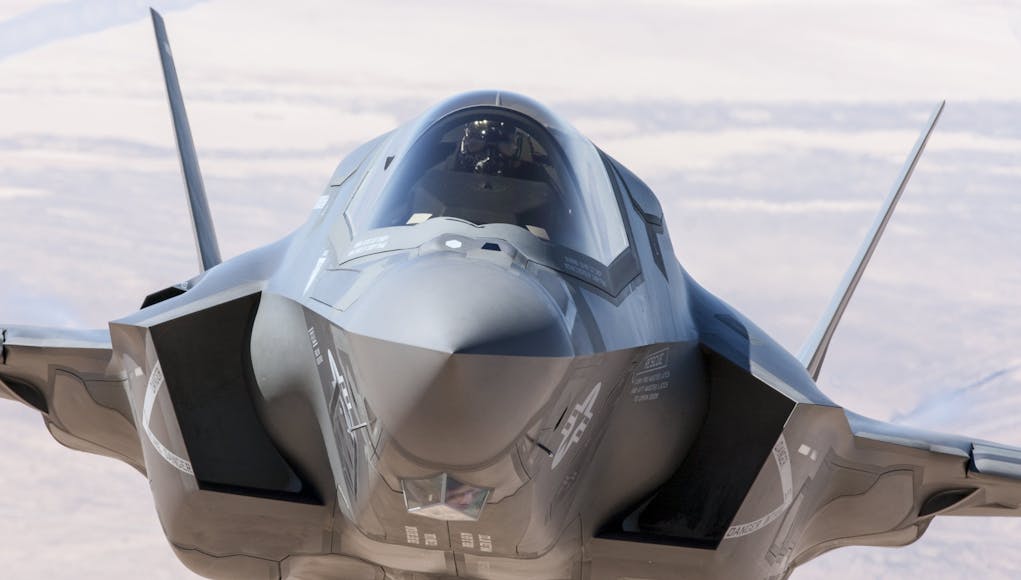
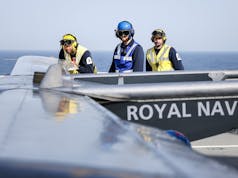
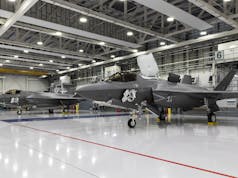
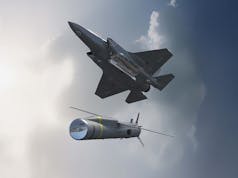

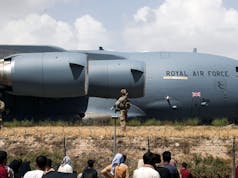

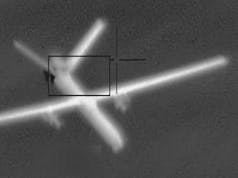
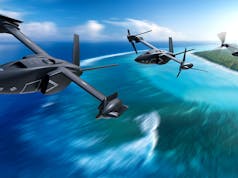
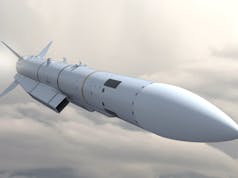


a good report there, much is made of the inability of the f-35 to dogfight, but its apples and oranges it wasn’t designed as a dogfighter, it was designed to sit beyond visible range and destroy targets as they came into its radar detection, why would you risk pilots in a dogfight situation when you have the means and capability to destroy targets from beyond the horizon? its the same as developing a sniper rifle that can kill from 5 miles and then saying its a rubbish weapon compared to an assault rifle with a bayonet
Yep, I mean you hear no end of complaints that the C-130 is no match for a SU-27 in a dog fight. I mean I can’t understand why the worlds air forces are still flying such a lame duck! What a failure of an aircraft!
The story about the F35s inability to dogfight apparently started after a trials aircraft was pitted against an F16. Being an early block version without much of the computer code needed for air combat, it was at a serious disadvantage, though for the purpose of the trial it was adequate. The media being what it is, got hold of the story and through their ignorance created the meme that still survives today.
Lets hope our enemies dont develop AWACS facilities then. All they need to do in that case is direct Flankers to visual range and F-35s are screwed…
It’s the only game in town. Even if it were a completely different design I think the project would be, given the current state of our technology having the same or similar problems due to complexity. I think alternatives to the manned fighter will appear long before these aircraft are worn out or indeed before the last ones are built (if ever).
As soon as I saw the headline I thought that this will be a good thread with many comments, as even on UKDJ this is an emotive subject.
Looking forward to the moans and counter moans. Go Nigel!
LOL! ???
So as stealth is one of the main advantages offered by the F35, I wonder if the team at BAE are looking back through their original design concepts to come up with something to further improve the capabilities Typhoon?
We know about improvements to the performance of the engines which give it increased thrust and improved range along with thrust vectoring, but what about this?
https://www.google.co.uk/search?q=typhoon+twin+tail&tbm=isch&tbs=rimg:CWqKK-xowwwYIjj-UCm5TymCDXIlGMcn8eQf40HQe0Edm4LevvuZf9vEFzLn75ka3Wqei-mvlsPkOP5JvrKAb6N9xSoSCf5QKblPKYINESVRGuJTNqjuKhIJciUYxyfx5B8RTi6PwSoYxYwqEgnjQdB7QR2bghGOy9YCFsKPhSoSCd6–5l_128QXEZ6vhKFgZX6OKhIJMufvmRrdap4RigQ3pNaBpC0qEgmL6a-Ww-Q4_1hEY-3QiiRBxuSoSCUm-soBvo33FEXrDU4VoiNBq&tbo=u&sa=X&ved=2ahUKEwjBvdnG1cndAhVBdhoKHdSPAt8Q9C96BAgBEBg&biw=1745&bih=857&dpr=1.1#imgrc=aoor7GjDDBgkvM:
We plan to do something similar in order to fit the meteor missile inside the F35B by 2024, so why not improve Typhoons airframe as well?
“The Meteor missile does not fit the F-35B internal weapons bay since its tail fins are too large to fit and therefore requires some adjustments. To get the missile inside the weapon bay MBDA plans to equip the Meteor missiles destined for the F-35 with clipped tail fins that will be clipped in height and lengthened, to retain the wing area and thus maintain the weapon’s kinematic performance.”
https://defense-update.com/20170421_f35_meteor.html
I knew you wouldn’t let me down.
A perfect example of adding stealth characteristics to a 4th gen airframe can be seen here.
http://www.thedrive.com/the-war-zone/15300/boeing-might-include-stealthy-features-on-overhauled-us-navy-super-hornets
Was that not the original European Fighter concept when France were still in pre-Typhoon/Rafale?
Not sure Davy B, But someone on here would most probably know. I raised this point some time back and it appears some work has been carried out in the past, so a revised tail section similar to that of the F35 whilst installing thrust vectoring could possibly kill two birds with one stone.
It’s an interesting concept that could possibly help to improve the Typhoons stealth characteristics?
Dogfights are history like the spitfire ….Dogfight unbelievable rubbish it’s not 1940s .
That’s what they said when the F-104 and F-4 came out..if long wave reader can detect and send planes to the general direction, the IR and imagining sights can take over. That being said, the 35’s won’t be alone. F-22s will already have directed their missiles to the bogie’s
Do dogfights even happen between high tech combatants? Trouble is we are still thinking in terms of the BofB or Korean or Vietnam War in terms or arial combat, it seems we just can’t get our head around kills from beyond visual range and the advantages inherent in it. I guess it has a lot to do with the fact that with such an action it has little to no visual trigger or excitement for us to visualise compared to aircraft flying around in aerobatic dances, it’s the way the mind works I guess. It’s something we should really be able to understand as a secondWW fighter, especially a late one, was a pig of a dogfighter in terms of manouverability as compared to a Sopwith Camel yet would have a 100% kill ratio no doubt. It’s why biplanes were persistently deemed better by the ‘experts’ well beyond their sell by date.
We really, or should I say the press and their readers need to, get up to date with realities, dogfighting looks great in glorifying films and romanticised memories perhaps but is almost totally irrelevant in modern advanced tactics.
The issue is, there’s a precedent. During the Vietnam era, the US thought the age of dogfighting was done and that fighters only needed to be fast and carry plenty of missiles. Then the F-4s and other missile boats took a beating and demonstrated there was still a need for a gun and dogfighting ability. Also during the Falklands the maneuverability of the Sea Harrier was a big advantage over the Argies (although granted, the FAA pilots had a lot of advantages including better training and air direction).
I’ll add right now that I don’t think dogfighting is a necessary capability for the F-35, HOWEVER they are intended to be in service for a long time, like 2070 for the US. In that time, it isn’t beyond the realm of possibility that dogfighting makes a return as stealth aircraft and the ability to avoid BVR weapons (either through stealth, decoys/jamming, or laser defences) make getting in close the only reliable way to get a kill. It’s not a reason to criticise the jet now, but it’s a possibility military planners will have to consider
The Harriers biggest advantage was their sidewinder missiles…
And the well,trained RAF pilots that flew them
Hi Callum
I think dogfighting has always been relatively rare – even during WW2.
The historian Mike Spick has written that four-out-of-five pilots shot-down never see the aircraft that does it!
I think the Falklands campaign followed the same trend; I believe there were very few manoeuvring dogfights. I’m only aware of two – a Mirage 111 “kill” by Paul Barton on 01/05/82 and three IAI Daggers shot-down by the Ward/Thomas combo on 21/05/82.
Most Argentinian pilots were caught unawares and “bounced” in their “six” – the VIFF capability of the Sea Harrier was never used. Better British tactical formations, better situational awareness in the cockpit, and the Sidewinder AIM-L, seems to be what counted.
The secret to success is having great situational awareness (to see the bad-guy first), plus sparkling acceleration (to get into position for a first-strike), and the ability to generate a high-rate of turn (to get out-of-trouble). From what I’ve read: the Lightning II certainly scores extremely highly in SA, and is probably no slouch in the other two. I think the fundamentals are all there – and we have the promise of an outstanding combat jet in our inventory for the foreseeable future.
All forgiven with the Tornado F3 then if dog fights are not necessary?
As only recently some one here commented it could not dogfight and had to be protected in the Gulf war.
Considering it too was not designed to be a dog fighter but to fly CAP at long ranges in the UK ADR to take down Soviet Backfire bombers.
So with F35 stealth and advanced passive and active systems, plus Meteor, all is well.
Hi Daniele
With the right tactics, I think late-model Tornado F3s were no push-over in the air-combat arena. Indeed, in NATO exercises – they even bested the F-15 on occasions.
As you know, the F3 was originally developed to take out Cold War Backfire bombers at long-range over the North Sea, at low-level, at night, in a snow-storm – and countering heavy ECM! In such circumstances, it would have been outstanding interceptor.
Admittedly, it had mediocre medium-level performance, and it’s agility was relatively poor. But it had several things going for it ….. outstanding acceleration at low-level (probably the fastest thing in the sky), a great long-range radar (eventually!), excellent missiles – and an RAF crew who really knew their business. Re-equipped with the Eurojet EJ200 it would have been even better!
I know in ACM exercises with other fighters, the F3 deployed slashing high-speed attacks, and tried to avoid being sucked into a turning dog-fight.
It was held back during Gulf War 1, but I’ve always been sceptical about it needing to be protected. I think the genesis of that story might simply be the USAF wanting to keep all the air combat opportunities to itself.
I think the F3 may have been more than a match for an Iraqi Mirage F1, or the Russian jets in Saddam’s inventory – maybe even the MIG-29.
Mind you, if I had to go to war – I’d still rather do it in a Typhoon!
Hi Alan.
Good read. Cheers.
Yes I remember the Blue Circle fiasco!
I’d just like to point to DaveyB’s comment on another thread which I think nicely describes the future of “dogfighting”, including with the F-35. I’ll paste it here, hope that’s ok DaveyB:
“Sorry Colin, but I must disagree. The F22 for example was primarily designed as an air dominance fighter that could super cruise (maintain supersonic speeds without using reheat) and make sustained turns whilst supersonic. This gives increased energy (range) to Air to Air missiles (AAM), but also enables the aircraft to minimize the time it is in the return fire zone. Because of the superior thrust to weight performance over say an F18 along with the vectoring exhaust nozzles still enables the aircraft to mix it with 4th gen aircraft.
The aircraft employs different tactics to earlier 4th gen aircraft, much like the Typhoon. Zoom in, fire, then zoom out. The difference being the F22 uses stealth to hide itself and uses a low probability of Intercept radar to search for and designate targets. However, admittedly the aircraft does suffer from a limited internal weapons load. This has been mitigated by pairing up the F22 with other aircraft. A very good example of this is during the recent trials with the Typhoon. The Typhoon was kitted out with Meteor test missiles and flew some distance behind the F22. The F22 acted as the scout, searching and designating targets for the Typhoon. The trial was very successful, especially as both aircraft were able to super cruise giving the pair a distinct advantage against their opponents. So basically, the pair could designate targets a long time before their opponents were even close enough to return fire. This is why the USAF are now pairing up F22s and F15s, with the F15 pretty much relegated to be a bomb truck for the F22, they’re still keeping AMRAAM though!
The RAF will and have done something similar. The Sentry with its very long-range search radar can designate targets to Typhoons via Link16. The Typhoon remains completely passive during the engagement only feeding the missiles (AMRAAMS) course updates, once the missile gets within range, its radar goes active and tracks the target. With Meteor there may be a case where the Sentry can give course updates allowing the Typhoon to return to base to re-arm. The F35 when it becomes fully operational will perform a similar function as the F22 as a scout for the Typhoons.
In RN service I’m certain that a Crowsnest fitted Merlin will perform as per the Sentry searching and designating targets for its F35s. Furthermore, I would expect a lone F35 acting as a long-distance scout searching and designating targets for waiting F35s or the T45’s Aster.
The F35 in RN/RAF service will be armed with both Meteor and ASRAAM AAM. The Meteor has a phenomenal range as does the ASRAAM. The ASRAAM is designed to engage targets at just beyond visual range, to give the aircraft an advantage over conventional IR AAM, i.e. shoot first, then get away before your opponent can return fire. The F35 is fitted with the APG-81 AESA radar. This is not only a multi-mode radar but also low probability of intercept. This means its very difficult to detect, so even when being used actively will give a distinct advantage over your adversary. This is backed up with its next generation IR search and track system. The Typhoon’s Pirate IRST is believed to be a standard which others are compared with. It has very long range search and can detect small stealthy targets very well, the system fitted to the F35 is supposedly better giving a full hemispherical coverage, allowing the pilot to see through and around the aircraft. It will detect 4th gen aircraft at a much greater range than the F35s heat signature can be detected.
As for the F35s aerial performance I wouldn’t worry too much. At this year’s RIAT the F35A gave a very good demonstration of its prowess on par with the F18 at least. Also, food for thought regarding dog-fighting, a RAAF F18C equipped with an ASRAAM successfully engaged a target directly behind the aircraft; literally the missile flew forwards off the launch rail, then did a 180 degree turn to engage the following target. This is a massive step change in capability and something both the F35 and Typhoon will be able to do.”
Potentially a “smart move” by Israel, and one I would agree with until all 966 current deficiencies have been fixed along with the actual cost of upgrading to Block4.
“The argument within the air force apparently isn’t over whether a third F-35 squadron is needed, but over how soon it is needed.
Proponents of the F-15 prefer to postpone buying the third F-35 squadron until near the end of the next decade.”
https://www.haaretz.com/israel-news/israeli-air-force-leaning-toward-f-15-over-f-35-for-next-acquisition-1.5769565
Israel 2!
“Beyond the F-16s, The IAF’s F-15 Eagles will also require replacement in the coming years, which will be a competition all its own. If the F-35 falters, sharply closer defense relations with Italy could turn the Eurofighter into an option, and Boeing is spending private funds to develop a stealth-enhanced F-15SE “Silent Eagle.” The F-15SE would offer longer range, twin engines for reliability, a much wider set of integrated weapons, and IAF fleet commonalities, in exchange for less stealth than the F-35. If costs are even close to equivalent, the F-35 will have a serious competitor.”
https://www.defenseindustrydaily.com/israel-plans-to-buy-over-100-f35s-02381/
Increase the pace of Typhoon upgrades, introduce a fleet of Taranis and we could do the same thing! No need for F35A’s at all.
https://www.popularmechanics.com/military/aviation/a25656/eagle-2040c-next-generation-f-15/
Nigel – yes the F15SE is an option but also the F15X,i wonder if any of these will see any orders ?
Time will tell Paul T.
The F-35 keeps to it design intent, that of replacing the F-18, F-16, AV8B and A-10. It will prove exceptional in these roles with time.
So why are small nations being persuaded to buy them?
The F-35 is not an aircraft for a small nation to defend against a larger aggressor. Its lack of speed severely limits QRA effectiveness (Rule 1 of European QRA – Be faster than a Blackjack). And it needs to operate in controlled airspace where its bluff form can exit theatre slowly to limit skin and hot gas heat detection.
I see how NATO allies would pool their F-35 resources in global deployments. However, once home, I see a severe limitations in F-35 usefulness. It would fly with its radar reflectors exposed at all times, hiding the classified stealth signature, and then be the subject of any ridicule pilots of Russian built aircraft could bestow upon it; mostly by simply flying away.
To this day the best aircraft for small nations to buy is the Saab Gripen. An economic and fast aircraft which, when the chips are down, can carry a vast array of cutting edge munitions into the fight.
I say don’t underestimate the F35. We won’t know it’s true capabilities until the next software block is released. It is currently doing very well against 4th gen fighters with a significant chunk of capability yet to be unlocked.
I was lucky enough to have dinner with a retired Sea Harrier engineer recently and we got talking. He alluded to the Harrier being a damn fine dog fighter and regularly taking out F15’s in exercises despite its performance stats lacking in many areas. The use of the lift nozzles proved very useful in sudden breaking and speed of turn allowing a Harrier being chased to leap backwards over the F15 and take it out. The American pilots got very frustrated apparently!
My point is, can the F35b’s nozzles and lift fan be used to equal effect? As with the Harrier, this could make up for lack of speed and turn rate against peer fighters.
If the F35 is in that situation then something has gone very very wrong!
I have been thinking about this and believe it is feasible for the F35 to do a similar manoeuvre. However, I don’t think it will be as usable or instantaneous as the Harrier’s and its all to do with time.
The reasons for this are two-fold. Firstly the air intake and exit doors have to be forced open against the air stream. There will be a practical speed limit at which point it is no longer viable. Secondly, the lift fan needs to be up to speed to produce sufficient thrust. I’m pretty certain that in forward flight the lift fan’s drive shaft is decoupled (although I could be wrong). But I think that the parasitic drag of the lift fan, dive shaft, gearbox etc is removed to ensure the all the effort goes in to pushing the aircraft along. Therefore, if the fan has been decoupled it needs time to spin up and generate the required thrust to lift the aircraft. Therefore in a “dog-fighting” scenario, I don’t believe there will be sufficient time for the doors to open and the lift fan to generate the lift that the pilot needs.
The Harrier’s VIFF manoeuvre was near instantaneous by comparison. This is because the cold nozzles (forward pair) are directly coupled to the cold stage of the Pegasus’s engine. So where ever the nozzles were pointing thrust is directed.
This was the genius of the Pegasus engine. However, the engine was never designed to go supersonic and this held back the development of the replacement Harrier. There was a development of the Pegasus that turned it in to a three nozzle engine from a four (if you’re lucky enough to visit RR Bristol it was on display). It was a variable by-pass engine and retained the two forward cold nozzles linked to the cold stage, but amalgamated the rear two nozzles in to one straight exhaust using a rotating nozzle similar to the F35s. This allowed it to use an after burner to attain supersonic flight. I don’t believe the engine was developed enough to generate sufficient thrust for super cruise. It’s a shame the engine was not further developed as I’m sure it would have been quite something. However, the variable by-pass was developed and later used on the EJ200.
The main issue with the Pegasus design with regard to the F-35 is that it is very bad for stealth. This is why they went with a loft fan for the F-35. There were quite developed designs for the supersonic harrier so I think they solved most of the issue with that a long time ago. However stealth was not a thing back then.
I don’t know why people think dogfighting is outdated, anyone who has seen Starwars films will know that dogfighting will be just as relevant in the future as it was in history. The F35 needs to be an agile dogfighter
But that was a long time ago and in a galaxy far, far away to boot! 😀
The F35B is replacing the Harrier, can’t imagine any pilot would rather go to war in a Harrier over the F35B.
For the first time that I can remember; I am making a post after the reply has been made! Steve M has brought me into this discussion by re posting a response to one of my posts on another thread made by DaveyB 🙂
I agree that DaveyB’s post above is full of good info but it ignored several points I made about the F35B and I think it is important to underline the fact that WE will have the B and not the A or C versions which have very different performance envelopes to our version.
Most of the comments on the F35’s performance made above relate to the A and C versions not to our B (sadly the runt of the litter).
Dogfighting:
I would prefer to call it visual range combat and there will be times when it can not be avoided. The F35B has limited range, limited weapons capacity, limited maneuverability and limited speed compared to the other versions. The UKDJ article above states quite clearly that the F35 was designed to operate in tandem with more agile ‘shooters’ and speculates that it would pair up beautifully with our Typhoons. Sadly there will be no Typhoons onboard our carriers (big mistake) so our F35Bs will be all alone. Once a ‘Meteor’ has been fired then we will be vulnerable to detection and we will be too slow to run away.
Bring on the Naval Typhoon pretty please.
Apologies, I forgot to mention you in my preamble to the copy and paste dump. Hope you didn’t mind.
Agreed Colin Brooks,
I never understood why we never continued on with the development of a Naval Typhoon. We talk about using Typhoon to test and evaluate future equipment upgrades for Tempest and even think a Naval Tempest is a good idea (it is) so why not do the same for the naval version?
Placing all our eggs in one basket (F35B) is, to say the least very shortsighted in my opinion. If everything works out fine with the F35 programme great, but if it doesn’t?
We only require traps as it can take off without the need for cats, but continued development of both (EMALS) would be the smart thing to do sooner rather than later.
Time for a rethink HMG, Never place all your eggs in one basket!
It would need CATs. It is possible a typhoon could take off without them but it would have barely any weapons or fuel and it would be dangerous. Just look at the Russian carrier for this. It is practically useless as its aircraft can’t carry anything useful and still operate.
Continuing and investing the development of EMALS opens up the potential to fly different aircraft off the deck of the QE making it a far more versatile addition to the Royal Navy.
“READY FOR LAUNCH
Modern carrier aircraft typically take off with the use of a catapult that attaches to the nose gear. These catapults are expensive to procure, maintain and operate. Catapult launch also leads to a heavier aircraft as a result of the additional weight on the aircraft’s structure.
Typhoon is well known for its exceptional thrust-to-weight ratio which has been regularly demonstrated at air shows and in customer flight trials. It also allows the aircraft to take off from a carrier using a “ski-jump”. Detailed simulations have shown that the aircraft will be able to take off in this way with a full weapon and fuel load – providing a nation with a truly potent naval aviation capability.”
And don’t forget, an even more powerful engine has been developed since this post creating up to 15% more thrust while at the same time saving on fuel.
https://www.defencetalk.com/naval-eurofighter-an-aircraft-carrier-version-under-development-31926/
Or could a dedicated Naval Typhoon do the same thing? Either way, adding the ability to fly these off the deck would clearly be a bonus too!”
Austrailia is very interested in it from some of the reports I’ve read.
“The Navy’s EA-18G Growler Will Soon Be Armed with What Could Be the Ultimate ‘Weapon’
https://nationalinterest.org/blog/the-buzz/the-navys-ea-18g-growler-will-soon-be-armed-what-could-be-25704
(Chris H) Nigel – You should really park any idea of a ‘naval Typhoon’ because basically BAE had a look and realised the costs in time and money to redesign a Typhoon for naval use made it a pointless exercise. After the French left the partners decided none of them would be building a CATOBAR carrier!
If you design an aircraft for CATOBAR use from the outset the only extra real cost is in weight. A Rafale M is some 500 Kgs heavier than a Rafale B or C as it requires a longer and bigger front undercarriage with twin wheels, a vastly stronger main undercarriage and of course a stronger fuselage to take the higher stresses of the hook and Traps. My only regret about the French baling out of the Typhoon project is that we lost a) a naval version (and where would that have led in our carrier designs), b) economies of scale in manufacturing and c) wider export sales
Given the only new sales opportunity is now the Luftwaffe Typhoon itself is now nearing the end of its production life for 3 reasons:
* Politically Airbus have distanced themselves from BAE and Leonardo (who happen to be the majority shareholders in Eurofighter) as it moves under the EU umbrella with Dassault
* The UK has decided that its fighter future lies with Team Tempest consisting of BAE, RR, Leonardo and MBDA and it will inherit all the advanced systems from Typhoon, buy sensor suites from the USA and create more of our own.
* It is very doubtful RR and its Eurojet majority partners in Italy and Spain will allow the EJ200 to be developed further to benefit Typhoon keeping it for Tempest. Any Airbus / Dassault fighter will have to use SNECMA engines anyway or the French will walk away. Again. The improved EJ200 (it will be called the RR XXX) will go to Tempest
Related to this:
It is quite clear from today’s summit in Salzburg the EU are now hardening their stance over Brexit by refusing to accept any of our compromise offers. So any possible future co-operation is now going out the window. I fully expect Airbus to leave the UK entirely as new wing designs are brought forward and built elsewhere and close its wing making operations in the UK. I am not even sure the Bombardier (now Airbus) wing plant in Belfast is now safe. Quite how they replace the unique carbon fibre technology provided by GKN UK will be interesting. F-35, Tempest, UK satellites and UK spaceports are our aerospace future with possibly wing making for Boeing maybe.
Hi Chris,
I share Nigel’s passion for the Typhoon – but I agree that a navalised version has got “potential procurement disaster” written all over it. I think a consequence of the weight increases you highlight is also a significant change in the centre-of-gravity of the aircraft, and a major redesign. In my view, the investment required and the risk associated with Seaphoon is not worth the likely benefits.
You paint an apocalyptic picture of the possible end of major civil aircraft design and production in the UK – and the loss of thousands of skilled jobs. It would be a sad end indeed for a British industry which gave the world the jet airliner. One hopes it won’t come to that – but the risk is there. No doubt an unintended consequence from the vote of June 2016.
I was thinking Nigel’s READY FOR LAUNCH sounded more like a company press release than any kind of serious analysis. Looked for the author and found it was Eurofighter GmgH.
Correct postpositivist, To answer Lee1’s concern about the ability to launch without Cats as the link attached to the post shows.
Chris – Oddly Airbus is has considered moving wing manufacture to China or other non European countries. So any move sounds more political. Working with the UK on projects was never an issue pre 1973 so again appears to be a rather childish ‘take my bat and ball with me’ response from the EU.
I would disagree with that. The thrust to weight ratio of the Typhoon is similar to the MIG-29. It is 1.15 in interceptor mode (ie a couple of AA missiles but with bomb load it will be much lower. The MIG-29 can not operate properly off the Russian carrier which is 20m longer than the QE.
I agree there are certain performance limitations with the F35B when compared to its A and C brethren.
However, I believe we will do as we have always done and work around the problem to deliver a world beating capability. The F35 is simply the best option for the UK for both the RAF and FAA. For starters it has significantly more capability than the previous Harrier, Jaguar and to some degree the Tornado. The aircraft should be able to operate from roads as per the Harrier for CAS, can carry out interdiction strikes like the Jaguar and tactical strikes like the Tornado. But more importantly have a greater chance of returning unscathed.
I have already said my peace on how I believe the aircraft will operate in the air defence role similar to how the Tornado F3 was deployed. But this time it has the best avionics to start with, unlike the F3 which had to wait for the Foxhunter to work properly. It is still too early to properly criticise the aircraft before it’s fully operational and right at start of it development cycle.
Related…
https://www.military.com/defensetech/2018/09/19/precision-ship-landing-system-could-be-game-changer-bare-airfields.html
Cheers!
Interesting post!
I noticed this article from the same source. Not sure why they would be even contemplating this?
“It has been reported the Air Force is not only considering an advanced “F-15X” fourth-plus generation fighter for its inventory but is also open to an F-22 Raptor-F-35 Joint Strike Fighter hybrid concept.”
https://www.military.com/daily-news/2018/09/19/beyond-brrrt-airpower-alone-wont-secure-victory-goldfein-says.html
That’s been shot down. I personally think it’s a good idea that should have been seriously considered as an interim plug to Gen VI upcoming (fielding in just over a decade). I have serious reservations about relying on just F35’s. The Chinese know too much about them and their capabilities. Not to mention the Chinese made chips in them that probably have backdoors built in…
https://www.defensenews.com/digital-show-dailies/air-force-association/2018/09/12/air-force-not-considering-new-f-15-or-hybrid-f-22f-35-top-civilian-says/
Cheers.
Thanks for the update Helions.
Very welcome Nigel!
Cheers!
Do we continue to wait for our full complement of F35’s, or start ordering more Typhoons now?
https://news.sky.com/story/uk-and-french-jets-scrambled-as-russian-planes-fly-over-north-sea-11503321
I think we’re fine with territorial defence. As seen in that article, we can also count on the French! 😀
A stupid question. If a Meteor BVR capable of Mach 4 is fired from a Typhoon at Mach 2 in a forward direction, can the Meteor reach Mach 6, or is it constrained by design for stability and perhaps communications to flying at Mach 4 regardless?
Will this compromise the F35B’s stealth capabilities? or has this been fitted purely for the purpose of testing the gun?
Link posted by Chris H in another thread.
https://twitter.com/cencio4/status/1043172250336120833
A further link I found here in relation to the above post.
I think this could be a useful topic for discussion on UKDJ in a separate post
Managed to find this.
http://www.thedrive.com/the-war-zone/8124/check-out-this-pic-of-an-f-35b-firing-its-gun-pod-in-the-air-for-the-first-time?
And this:
https://theaviationist.com/2018/09/21/u-s-marine-corps-f-35b-jets-involved-in-first-operational-deployment-near-the-horn-of-africa-flying-with-external-gun-pod/
Cheers!
So how does the aircaft track a target BVR without turning on its radar? As soon as it turns it on its stealth is negated.